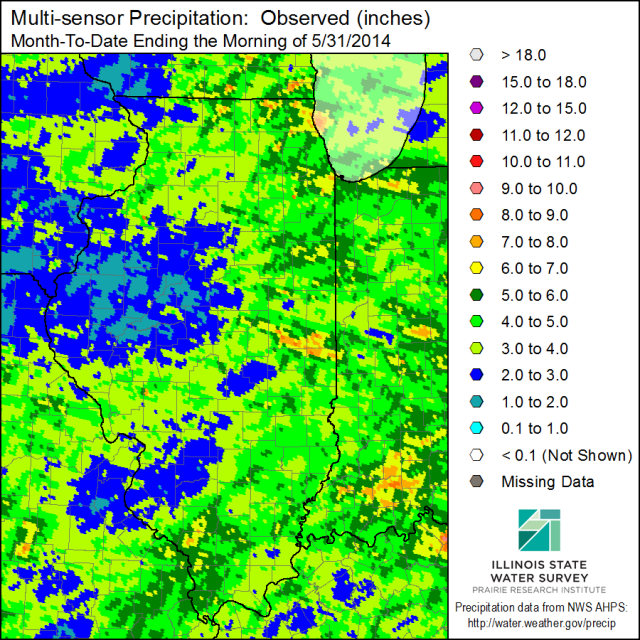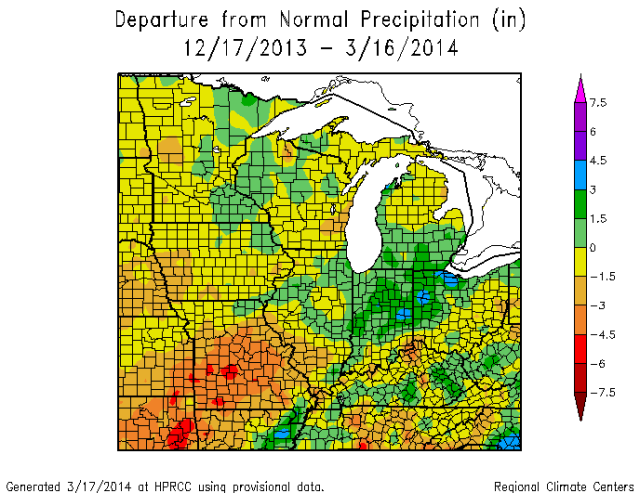Temperature
Based on preliminary data, the statewide average temperature for May in Illinois was 63.9 degrees. That is 1.2 degrees above average and the first month to be above average in Illinois since October 2013.
Precipitation
The statewide average precipitation for May in Illinois was 4.26 inches, just 0.34 inches below average. Below is a map of precipitation throughout the state. This is a radar-based product that is adjusted with rain gauges, resulting in higher resolution than a rain gauge network and more accuracy than a radar-only precipitation measurement. Sometimes hail can mislead the radar into calculating higher rainfall rates. That may have been the case in southern Champaign County, for example.
Some of the heaviest rainfall totals from the CoCoRaHS network for May occurred in Cook County, including Burnham-Hegewisch (IL-CK-82) with 7.64 inches and Homewood (IL-CK-64) with 7.58 inches.
The area of concern for May was the large section of blue across western and central Illinois, representing rainfall totals of only 1 to 3 inches. There are some smaller patches of blue in southern Illinois and far northwestern Illinois as well. One of the drier locations in west-central Illinois was Roseville (IL-WR-2) with only 1.32 inches with all 31 days reported. The US Drought Monitor list parts of western Illinois as “abnormally dry”.

Plots of Temperature and Precipitation
Here are the time series plots for temperature and precipitation departures for each month of 2013 and 2014. In the first plot, one can clearly see the string of very cold months from November 2013 to April 2014. On the second plot, the dryness of late last summer shows up. While March of this year was dry, it was counterbalanced by a wetter than average April.









